Cultural heritage is the cornerstone of human identity, representing the collective memory, achievements, and values of civilizations across millennia. However, historical artifacts—whether they are ancient sculptures, manuscripts, or archaeological finds—are incredibly fragile and susceptible to damage from environmental factors, human conflict, and neglect.
From the Nazis ransacking Europe’s museums during World War II to the Taliban destroying the Buddhas of Bamiyan in Afghanistan, history is littered with examples of cultural heritage being lost forever. Today, as we face new challenges in preserving these treasures, blockchain technology and non-fungible tokens (NFTs) offer a revolutionary solution.
By digitizing artifacts, creating fractional ownership models, and fostering global participation, we can ensure that our shared history is preserved for future generations. Projects like the Overstones NFTs collection are leading the way, It’s a powerful example of how blockchain technology can be used to protect and share our shared human history.
Overstones isn’t just an NFT collection—it’s a movement that’s redefining how we think about ownership, investment, and cultural preservation. By combining ancient artifacts with cutting-edge blockchain technology, Overstones is creating a new paradigm for NFTs and real-world assets.
EXAMPLES OF THE OVERSTONES NFTs COLLECTION
The Fragility of Historical Artifacts
Historical artifacts are inherently fragile, and their preservation is a constant battle against time and external threats. Here are some of the key challenges:
1. Environmental Factors
Light: Prolonged exposure to light, especially ultraviolet (UV) rays, can cause fading and deterioration of pigments, textiles, and other materials.
Temperature and Humidity: Fluctuations in temperature and humidity can lead to the expansion and contraction of materials, causing cracks, warping, and other forms of damage.
Pollution: Airborne pollutants can corrode metals, degrade stone, and harm organic materials like wood and paper.
2. Human Conflict and Vandalism
War and Conflict: Throughout history, wars have led to the destruction of cultural heritage. For example, during World War II, the Nazis systematically looted and destroyed countless artworks and artifacts across Europe. Similarly, in Libya, historical sites have been vandalized and looted during periods of conflict.
Intentional Destruction: The Taliban’s destruction of the Buddhas of Bamiyan in Afghanistan is a stark reminder of how cultural heritage can be targeted for ideological reasons. These towering statues, which had stood for over 1,500 years, were reduced to rubble in 2001.
3. Neglect and Theft
Many artifacts are lost to neglect due to a lack of resources or expertise to preserve them properly.
Theft and looting remain significant issues, with stolen artifacts often ending up in private collections or on the black market, where their provenance is erased.
The Role of Blockchain in Preserving Cultural Heritage
In the face of these challenges, blockchain technology has emerged as a powerful tool for preserving cultural heritage. Blockchain is a decentralized, immutable ledger that records transactions in a secure and transparent manner. Here’s how it can help:
1. Immutable Provenance
Blockchain provides a permanent and tamper-proof record of an artifact’s history, including its origin, ownership, and journey through time.
This ensures that the provenance of cultural artifacts is preserved, even if the physical object is lost or destroyed.
2. Decentralization
Unlike traditional methods of preservation, which rely on centralized institutions like museums and galleries, blockchain is decentralized. This means that no single entity has control over the data, reducing the risk of censorship or manipulation.
3. Accessibility
By digitizing cultural artifacts and recording their information on the blockchain, we can make them accessible to a global audience. This democratizes access to cultural heritage, allowing people from all over the world to learn about and appreciate these treasures.
NFTs: Making Cultural Heritage Shareable
While blockchain provides the foundation for preserving cultural heritage, non-fungible tokens (NFTs) take it a step further by making these artifacts shareable. NFTs are unique digital assets that represent ownership of a specific item, whether it’s a piece of art, a collectible, or a historical artifact. Here’s how NFTs are transforming the preservation of cultural heritage:
1. Digitization of Artifacts
NFTs allow us to create digital twins of physical artifacts. These digital representations can include high-resolution images, 3D scans, and detailed descriptions of the artifact’s history and significance.
Even if the physical artifact is lost or damaged, its digital counterpart remains intact and accessible.
2. Fractional Ownership
NFTs enable fractional ownership, meaning that multiple people can own a share of a single artifact. This makes it possible for a diverse and global community to participate in the preservation of cultural heritage.
For example, an ancient statue could be tokenized into 1,000 NFTs, each representing a 0.1% ownership stake. This not only democratizes access but also provides a new funding model for preservation efforts.
3. Royalties and Funding
NFTs can be programmed to include royalty mechanisms, ensuring that creators and institutions receive a percentage of sales whenever the NFT is resold. This creates a sustainable funding model for the preservation and maintenance of cultural artifacts.
Funds generated through NFT sales can be used to support museums, archaeological excavations, and conservation projects.
4. Education and Awareness
NFTs can be used to create interactive and immersive experiences that educate people about cultural heritage. For example, an NFT could include augmented reality (AR) features that allow users to explore a 3D model of an artifact or learn about its history through interactive storytelling.
This not only preserves the artifact but also ensures that its cultural significance is passed on to future generations.

Case Studies: NFTs in Action
Several projects have already begun using NFTs to preserve and share cultural heritage. Here are a few examples:
1. The Buddhas of Bamiyan
In response to the destruction of the Buddhas of Bamiyan, digital artists and historians have created NFT-based reconstructions of the statues. These NFTs serve as a digital memorial, ensuring that the Buddhas are not forgotten.
2. The Museum of Crypto Art
The Museum of Crypto Art (MOCA) is a virtual museum that uses NFTs to preserve and showcase digital art. While not focused on historical artifacts, MOCA demonstrates how NFTs can be used to create accessible and shareable cultural experiences.
3. The British Museum and NFTs
The British Museum has partnered with blockchain platforms to tokenize historical artifacts from its collection. These NFTs allow people to own a piece of history while supporting the museum’s preservation efforts.

The Ethical Considerations of NFTs and Cultural Heritage
While NFTs offer exciting possibilities for preserving cultural heritage, there are also ethical considerations to keep in mind:
1. Ownership and Control
In some cases, artifacts may belong to indigenous communities or nations that have been historically marginalized.
It’s essential to ensure that these communities are involved in the process and that they benefit from the sale of NFTs.
2. Accessibility
While NFTs democratize access to cultural heritage, they also require access to technology and the internet. Efforts must be made to ensure that everyone, regardless of their socioeconomic status, can participate.
3. Environmental Impact
The energy consumption of blockchain technology, particularly proof-of-work systems, has raised concerns about its environmental impact. However, many projects are transitioning to more sustainable alternatives, such as proof-of-stake.
Let's Begin A New Era of Cultural Heritage Protection
The fragility of historical artifacts and the threats they face from environmental factors, human conflict, and neglect make it clear that traditional methods of preservation are no longer sufficient. Blockchain technology and NFTs offer a revolutionary solution, providing a secure, decentralized, and shareable way to preserve our cultural heritage.
By digitizing artifacts, creating fractional ownership models, and fostering global participation, we can ensure that our shared history is preserved for future generations. Projects like the Overstones NFT collection are leading the way, demonstrating how technology can be used to protect and celebrate the achievements of human civilization.
As we move forward, it’s essential to approach this new era of cultural preservation with care and responsibility, ensuring that the benefits of blockchain and NFTs are accessible to all and that the voices of marginalized communities are heard. Together, we can create a future where cultural heritage is not only preserved but also celebrated and shared by people around the world.


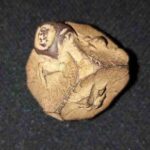
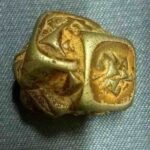

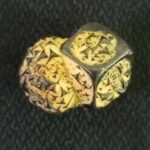

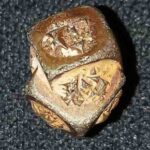


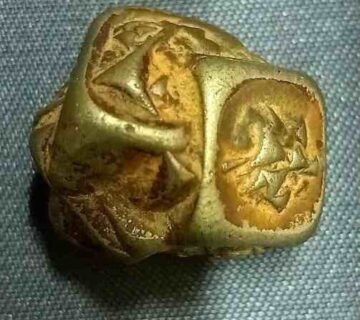

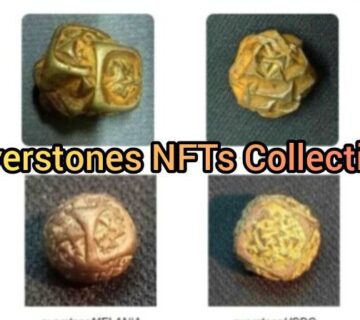

[…] READ MORE […]